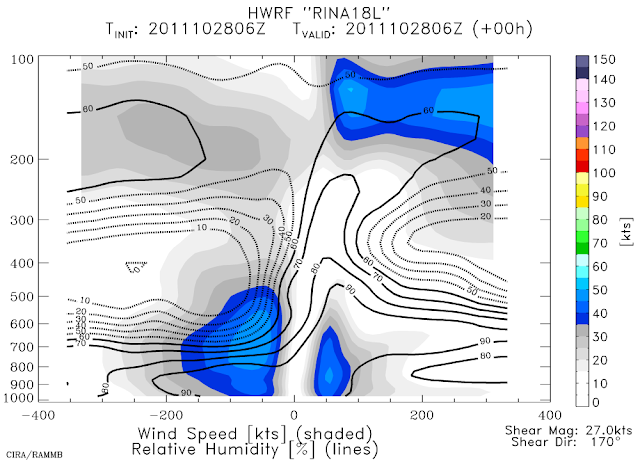In the past day, Rina has intensified to a 95kt hurricane, with a high likelihood of reaching 100kts... it would become the season's 4th major hurricane. Visually, it has become a beautiful symmetric storm, with delicate outflow cirrus expanding uniformly away from the center.
It has another couple of days to enjoy a low-shear environment, then as it heads further north toward Cuba, the upper-level winds become quite a bit more hostile. But in the meantime, the ocean below it is extremely warm not just at the surface, but is warm quite deep too (that minimizes upwelling effects that slow-moving systems are prone to). The map below shows the depth of the 26C water... Rina's current location has some of the deepest warm water in the entire Atlantic basin.
The forecast is still quite tricky because of the weak steering environment. In the next few days, it should continue its slow crawl to the N-NW, but after that, its future depends on whether or not it gets "picked up" by a passing mid-latitude trough. If it does, it will make a turn to the NE and head for Cuba and then Florida... if it doesn't, it should meander slowly to the west or even stay approximately stationary.
Basically... Mexico, Cuba, and Florida should all be watching this very closely.
Some additional strengthening is still possible, and for at least the next day, there's no reason Rina can't strengthen quite a bit.
Please visit my tropical Atlantic headquarters.
Subscribe to get these updates emailed to you.

















